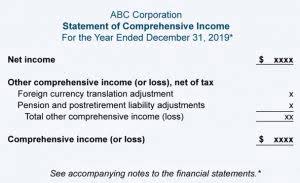Content

Top 5 Restaurant Inventory Management Software Options for 2022 Want to keep all your inventory items organized? Some suppliers Just in Time Inventory were forced to shut down because the auto manufacturer didn’t need their parts to complete any cars on the assembly line.
Retailers, restaurants, on-demand publishing, tech manufacturing, and automobile manufacturing are examples of industries that have benefited from just-in-time inventory. Handling raw materials becomes effortless, as there are no excess numbers that require additional space and resources to manage excess inventory.

This was because inputs from overseas factories and warehouses could not be delivered in time to meet the surge in demand caused by the pandemic. Because Aisin is the sole supplier of this part, its weeks-long shutdown caused Toyota to halt production for several days.
Under less than ideal conditions, responding to new customer needs can take months. This is especially true for large manufacturing companies that have to make many machining changes to shift the focus of production. By contrast, a JIT inventory system makes it easy to respond to new needs as they emerge. It also supports a company’s strategic agility due to the ease of obtaining resources in a less expensive yet efficient manner.
Just In Time Jit Production
This also allows the retailers to limit their offerings and put their full focus on only a few products youkeep on-hand for fewer inventory days. If any other orders come in during that production time, the same steps are followed. This keeps the production chain moving quickly and keeps excess inventory from building up in your warehouse.

For many companies, this emphasis on timing helps them keep and increase their market presence. JIT inventory management requires everyone in an ecosystem and supply chain to commit and work cohesively. If any part of that arrangement breaks down, it risks the entire infrastructure. The Kanban system highlights problem areas by measuring lead and cycle times across the production process, which helps identify upper limits for work-in-process inventory to avoid overcapacity.
Advantages And Disadvantages Of Jit Inventory Management
Instead of weeks or months most JIT implementations result in lead times of hours or a few days. On a visit to the US the management team of Toyota were inspired by, of all things, how they saw a supermarket handle their inventory.
Whether it’s hurricanes or snowstorms, labor or political unrest, or an outbreak of COVID-19, it seems like you need everything to go just right in order to avoid Just Isn’t In-Time Inventory. The automobile giant eliminated the need for capital large investment and cash money pools by optimizing every process involved in the business. Just-in-time inventory management has helped lean manufacturers boost efficiency for decades.
- While there is a certain amount of risk involved, the advantages far outweigh the risks.
- Some universal benefits include reduced inventory cost, reduced manpower for deliveries and more contact with dedicated suppliers.
- If no other company submit an order for the manufactured goods, they would then have four more products sitting in their inventory that are unnecessary.
- These goods are stored at on-site warehouses for the production process.
- With JIT inventory management, companies need to analyse their sales trends and variances with precision.
Ideally, a company employing the just-in-time system would have no on-hand inventory. A production process using the just-in-time system would receive the correct type and quantity of material inputs at the precise time the inputs are needed in the production process.
Impact Of Just‐in‐time Inventory Systems On Oem Suppliers
Here, summarize successful examples of using JIT to save money, speed production, and remain flexible enough to adapt to future marketplace changes. This revolution in manufacturing methods began when Toyota perfected JIT, a method to reduce waste in time and materials along the entire production line from suppliers to consumer. JIT inventory management increases productivity by reducing the time and resources required for manufacturing. You can also implement product changes quickly as there is less raw material stock. Product damage is also reduced because of having lower inventory levels. Inventory management ensures that the right amount of supply is available to meet customer demand.
- These deliveries can be daily or even hourly as needed to keep the production or sales process going and keeping up with demand.
- Can you predict how much inventory you will need in a given day, week, month?
- Price shocks in the raw materials are one of the biggest challenges for the businesses using this method.
- Stockouts can have a drastic impact on customer satisfaction, so businesses using the JIT strategy will need to streamline their production processes and supply chain management.
- The offers that appear in this table are from partnerships from which Investopedia receives compensation.
To solve this problem, you might opt to use a JIT inventory management technique, like the Kanban system. Just-in-time inventory management reduces waste, improves cash flow, increases flexibility, optimizes human resources and encourages team empowerment. The just-in-time inventory system minimizes inventory and increases efficiency. JIT production systems cut inventory costs because manufacturers receive materials and parts as needed for production and do not have to pay storage costs.
Just In Time Inventory Management Methodology
The JIT model reduces the costs of procuring, managing and storing excess raw materials and inventory. This results in a higher inventory turnover which in turn prevents inventory from sitting in your warehouse for too long and becoming obsolete. You can also receive and store deliveries in the smallest possible quantities, virtually eliminating excess raw material inventories.
Local sourcing ensures that your suppliers are located near your company’s production facilities, enabling timely deliveries and reducing the need for safety stock. Just In-Time Inventory is an inventory management strategy where you work closely with your suppliers so that they send you items only when you need them for production. With JIT, you keep the smallest possible amount of inventory on-hand and order and receive items in lot sizes as small as one. JIT requires a high degree of discipline, but leading companies use it as part of lean manufacturing, a production method that maximizes productivity and minimizes waste. Just-in-time parts inventory management is a management system that orders parts and products from suppliers only as required to meet the immediate customer demand. These items arrive from suppliers “just in time” to be immediately processed and shipped to fulfill customer orders.

45% returns mean that the firm booked a profit of 45 bucks per 100 bucks invested. While there is a certain amount of risk involved, the advantages far outweigh the risks. Malcolm Tatum After many years in the teleconferencing industry, Michael decided to embrace his passion for trivia, research, and writing by becoming a full-time freelance writer. Since then, he has contributed articles to a variety of print and online publications, including , and his work has also appeared in poetry collections, devotional anthologies, and several newspapers. Malcolm’s other interests include collecting vinyl records, minor league baseball, and cycling. Show the CEOs of any supply companies you might want to partner with how they can benefit from being part of your JIT program.
How Does The Theory Of Constraints Toc Apply To Jit Inventory Management?
Not every just in time inventory system will be suitable for businesses of different sizes, or even in different industries. Therefore, before adapting the JIT strategy, it is crucial to check if it fits for your business. Migrating from other inventory management software solutions to TRXio is difficult. The objective of this prompt is to help you discover that the JIT model is truly revolutionary and has resulted in certain companies becoming dominant players in their industries. Wherever possible, JIT advocates very small production lot sizes, preferably of just one unit. This means that inventory moves through the production process in very small, discrete batches. As each lot is completed, it is immediately passed along to the next downstream workstation, where the production staff inspects it, and can reject it at once if quality standards are not met.
This caused a ripple effect, where other Toyota parts suppliers likewise had to temporarily shut down because the automaker had no need for their parts during that time period. The just-in-time inventory system is a management strategy that minimizes inventory and increases efficiency. A JIT system will ensure that you’re not stuck with products that no one wants, saving you having to reduce the price just to clear the stock and ultimately cutting into your profit margins. https://www.bookstime.com/ With a JIT system you won’t be left babysitting high levels of stock that have reached the end of their product life cycle. A JIT system will cut out the need for large warehouses – or at the very least minimize the storage space required – which flows back to the bottom line of your business. Low inventory also allows a business to avoid product waste due to damage or expiration. With less inventory, the sum invested for the same level of production decreases.
- It’s up to the component manufacturer to manage its own inventory process.
- Additionally, it needs reliable suppliers that can always deliver parts quickly, and the ability to efficiently assemble machines that put together its vehicles.
- If you have a positive answer for all or at least most of the above questions, you are likely in a good position to adopt a just in time inventory management system and benefit from it.
- Conventionally, the companies procure their raw materials before the sales cycle starts.
- No matter the inventory method, you always rely on manufacturers and suppliers to control their production time frame.
It is not user-friendly, and an experienced person is required to tackle any issues or challenges faced in the software. Employees walk individual parts through the processing steps in a work cell, thereby reducing scrap levels. Doing so also eliminates the work-in-process queues that typically build up in front of a more specialized work station. Free Financial Modeling Guide A Complete Guide to Financial Modeling This resource is designed to be the best free guide to financial modeling! Excel Shortcuts PC Mac List of Excel Shortcuts Excel shortcuts – It may seem slower at first if you’re used to the mouse, but it’s worth the investment to take the time and… B.Neither the supplier nor the producer, though it does lead to more flexibility for both.
The Jit Inventory Market Today
Furthermore, a thoroughly implemented JIT system should shorten the amount of time required to manufacture products, which may decrease the quoted lead times given to customers placing orders. In 1970, Toyota introduced and implemented their own JIT-based strategy successfully. That approach is what’s now known as the Toyota Production strategy, which follows the tenets of a just in time inventory management system. In this, the requisite raw materials don’t arrive at its production floor until a customer places an order. Also, while production is in process, no parts or inventory are put in the next station till they are needed. This enables them to keep inventory levels at the bare minimum, resulting in lower costs.
Recently, the company’s stock dropped by 36% after a disappointing earnings report. To get JIT inventory management right, you have to work closely with suppliers of raw materials and manufacturing components to ensure that it only arrives right before it’s needed for production. For JIT to work, you need to have reliable suppliers who provide consistent-quality products, preferably with warehouses close enough to your location to make speedy deliveries.
Warehouse Possibility Report
Just-in-case inventory management is the strategy of maintaining large inventories to reduce the risk of back orders in the face of supply and demand uncertainties. In any manufacturing environment, the cost of components is influenced by the cost of commodities and raw materials. The JIT inventory model exposes enterprises to the potential of spikes in these costs. When price fluctuations substantially affect the cost of components, enterprises that have inventory on hand achieve a price advantage for the duration. If the spikes prove to be prolonged, manufacturers face the peril of shifting strategies.
Keep in mind that a JIT inventory system requires a resilient supply chain. Any delay in inventory shipments could lead to shortages and stock-outs. JIT systems have had to shut down due to interruptions from severe weather or problems at suppliers. If there’s a sudden demand for a certain product, the system may not have the flexibility to respond quickly. A 3PL partner like Warehouse Anywhere can provide the supply chain resiliency required to maintain JIT inventory when there are unforeseen disruptions. Just in time inventory management requires planning and forethought to avoid running into supply shortages.